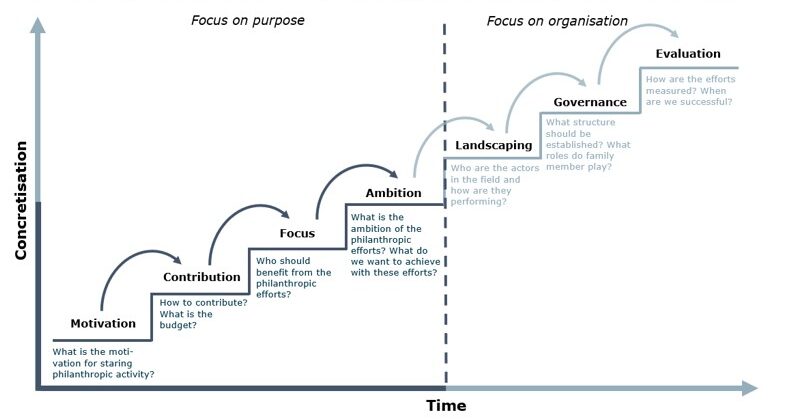Today, philanthropy also has a strong place in family ownership. Aside from the obvious charitable benefits to society, embracing philanthropy in the family community also has many benefits for families because:
- Philanthropy can fulfil a desire to “give back”
Where or to whom one decides to give back is individual, but typical options include one’s hometown, community, or nation, other entrepreneurs, and educational institutions. - Philanthropic work builds identity for the next generation
These efforts can create a shared identity for the family externally and give the next generation even more to be proud of. - Philanthropy offers engagement and roles in ownership
Philanthropy provides meaningfulness and an opportunity to “step into” ownership – also for people without a financial background/interest, for in-laws and for both younger and older generations who may not have any other active role in ownership. - Philanthropy is a great branding tool
Philanthropy creates goodwill – both towards society, but also towards investment cases and the press.
Whatever the unique reasons that make a family want to engage in philanthropic efforts, it is important to create the right strategy for the family.
Seven steps to strategic philanthropy
There are many benefits to starting – or rethinking – family philanthropy with a strategy process. You can move from a reactive approach to being more proactive in terms of what and how you will support the family’s focus areas. A strategy process can also bring the family together across generations, and with the potential participation of in-laws, train family members to make joint decisions and, most importantly, ensure that the efforts make the most impact.
In this model, we have summarised the seven areas where the family should ideally ensure clarity before launching philanthropic efforts. Below each step are a number of relevant questions that the family can discuss together. Note that the first four steps focus specifically on purpose. Over time, the efforts become more and more concrete, so that in the last three steps, you can specify more precisely how they should be structured, planned and evaluated.










